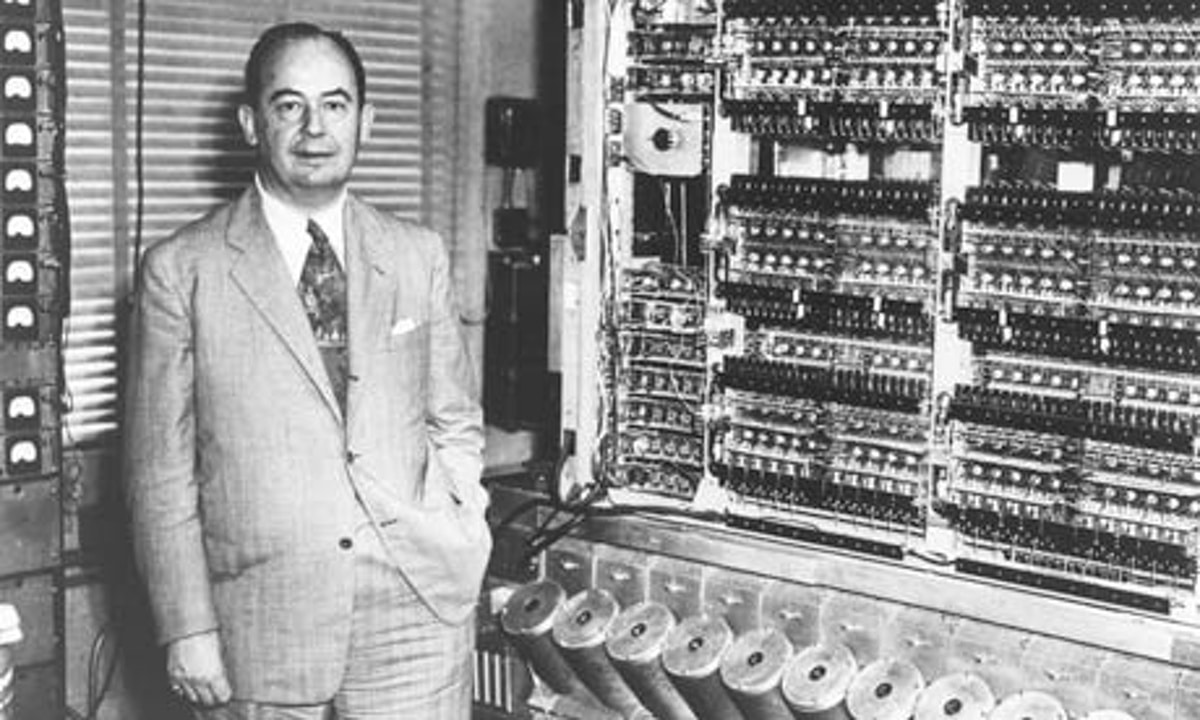We know what was first considered a child prodigy and then one of the most versatile and brilliant men of science, perhaps equal only to Einstein, of the last century. With a very wide spectrum of scientific talents, also developed thanks to a stimulating environment; in fact in those years Hungary offered a very luxuriant, flourishing mathematical reality. Skills discovered by his mathematics teacher Làszlo Ràtz, a famous professor of a Lutheran school in Budapest. John von Neumann’s knowledge extended from mathematics to physics, from chemistry to algebra, just to name a few. His innovative ideas and his kaleidoscopic mind have generated and given life to new solutions that are still the basis of the technological tools we use today.
The Family of John von Neumann
Janos Lanos Neumann, John in English, Hungarian Jew, was born in flourishing Budapest in the glittering period of the Belle Époque, on December 28, 1903. His father Miksa (Maximilian) Neumann and his mother Margit (Margaret) Kann, educated and wealthy, were part of the Jewish community of the Hungarian capital.
Maximilian Neumann was a doctor of law and director of an investment bank, Janos’ mother, Margit, came from a wealthy family in Budapest. The two had three children (John, Michael and Nicholas), the eldest son Janos inherited from his father the noble title “von” assigned to him in 1913 by Emperor Franz Joseph for economic merits and for this he will be better known as: John von Neumann .
A fabulous boy
And child prodigy what he was with a sharp intellect, by the age of six he could mentally multiply two numbers with many digits. Some sources suggest that around the age of eight he already knew mathematical analysis and Greek, Latin as well as Hungarian, his native language, he also assimilated Italian and English. He read entire encyclopedias and legend has it that he always had two books with him for fear of being left with nothing to read. But Janos’ main talent was neither for languages nor for the encyclopedias he read, but for the language of science, mathematics.
John von Neumann: the Studies
Considering the historical events of the time, Maximilian Neumann preferred to entrust the education of his children to educators or preceptors, not enrolling them in the Hungarian school until the end of childhood, pushing for them to learn foreign languages. John was the only one of the three brothers to inherit from his grandfather, Jacob Kann, a prodigious mind and an incredible memory that allowed him to amaze his first educators, giving him the ability to perform complex mathematical operations mentally. But despite his many talents, he never mastered the use of a musical instrument or the game of chess.
He continued his high school studies (1914) by enrolling in the prestigious Fasori, a classical Lutheran high school. Sensing the young boy’s powerful intellectual abilities, the famous mathematics teacher Làszlò Ràtz, from the Lutheran Gymnasium offered, in agreement with his father Maximilian, to give him extra-curricular lessons at the University of Budapest. The years of training in high school were so fruitful that even before finishing them he wrote an article in collaboration with the famous mathematician Feteke, which was later published in the journal of the Union of German Mathematicians. He finished his studies with honors, also receiving a national award.
University

In 1921 he enrolled in the course of studies in mathematics at the University of Budapest alternating the scientific training of his academic career between Budapest and Berlin which in those years knew a real affirmation of the mathematical disciplines. He studied chemical engineering between 1923 and 1925 at the Zurich Polytechnic. Between Vienna, Budapest and Berlin he was interested in every aspect of the scientific debate and met the most important mathematicians of the time. In 1929 at the age of 26, Oswald Veblen a leading American mathematician offered him a position as visiting professor at Princeton University. In the same year she got married and converted to the Catholic religion. When the Institute for Advanced Studies was founded in 1933, he was appointed professor of mathematics.
Contributions to computer science
The years of World War II push governments and militaries into the world of computers. The land artillery forces the military to continuous calculations to determine the precise trajectories of the projectiles. The ballistic tables each required 2/4000 trajectories each of them required about hundreds of multiplications. The Differential Analyzer came to the rescue of the military, a computer of the time which took about 20 hours to calculate each ballistics table. Still too much time. A faster numerical machine is needed, so the development of ENIAC (Electronic Numeral Integrator and Computer) begins in 1943.

Da ENIAC and EDVAC
ENIAC will be the first computer made up of electronic circuits, with no moving mechanical parts. Built to solve a single task at a time. Analyzing a different problem would have meant stopping the computer by manually changing the internal wiring, made up of thousands of switches and wire connections.
In 1944 Eckert and Mauchly (The designers of ENIAC) propose a new machine the EDVAC (Electronic Discrete Variable Automatic Computer) designed to store a program in memory. Von Neumann joined the project and in 1945 formalized a Report on EDVAC: the first computer with an operating system inside that made other programs work.
The EDVAC project was completed in 1952 and delivered to the Army ballistics laboratory in Aberdeen where it will be joined to ENIAC. Von Neumann demonstrates that a computer can have a very simple fixed architecture and be able to perform any type of calculation, with a suitable programmed control, without necessarily modifying its hardware each time.

